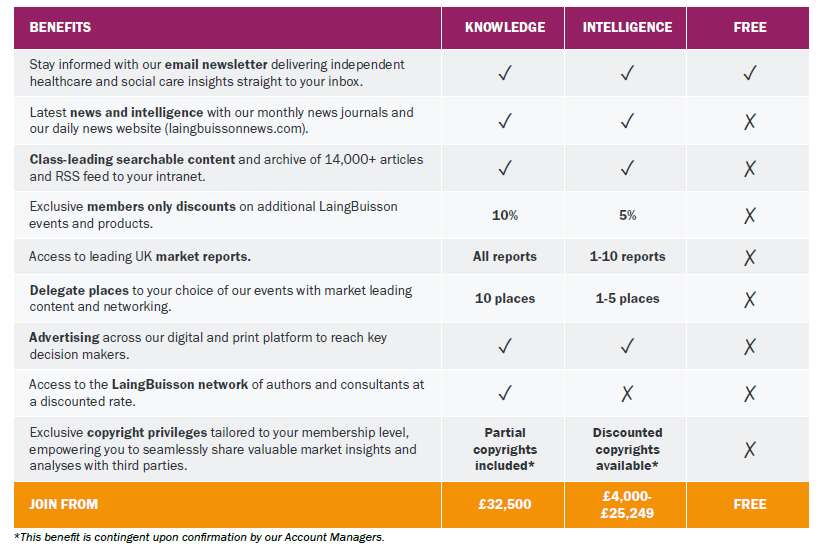Is the demand for homecare and supported living growing?
LaingBuisson has launched the 5th edition of its respected Homecare and Supported Living UK Market Report.
The fully-updated report looks at how this market has fared and developed through the past 18 months, as the UK emerges from the Covid-19 pandemic.
Estimated to be worth £11.5 billion in 2021/22 and with 670,000 people estimated to be in receipt of homecare or supported living services in the UK, these sectors occupy an intermediate position in the ‘ladder of care’ between care homes and informal (unpaid) care and support. Pressures on councils’ social care budgets have meant that some demand, which used to be fulfilled in care homes, has shifted to community-based homecare or supported living, meaning that these sectors have renewed upward potential.
The Covid pandemic accelerated digitisation among social care providers and triggered a surge of ‘tech’ innovation to support the homecare and supported living sector and social care generally. This has created the potential for tech-enabled independent sector providers to diversify and expand into a more central, and more profitable, role in integrated health and social care systems.
Throughout the first and second waves of the Coronavirus pandemic, the care sector benefited from a surge in job applicants as much of the remainder of the service sector of the economy was locked down. As the UK emerged from Covid in 2022, employment switched into a sellers’ market as service sector employers struggled to find staff to re-open businesses.
Report author, William Laing said:
“The relatively low rate of mortality experienced by homecare recipients is a tribute to the efforts of peripatetic homecare workers to avoid infections, since visiting several clients a day must have been a high-risk activity. One of the effects, which may prove to be long lasting, is the emergence of a narrative that care in one’s own home is safer than in a care home.
“While most of the major homecare and supported living providers currently focus on traditional services such as visiting domiciliary care, live-in care and supported living, delivered by low-paid staff, it is not difficult to envisage how the business model could diversify and expand into higher value services more akin to the American homecare model, including qualified nursing and distribution of MedTech equipment (in addition to medicines administration that UK domiciliary care workers do now). It is also possible to envisage upskilled homecare providers winning contracts (or subcontracts) to deliver new NHS services, including a role in the major planned expansion of virtual wards as well as population health.”







